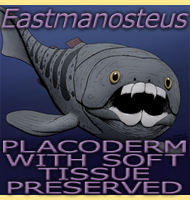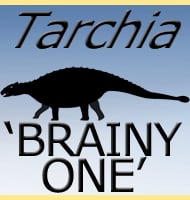In Depth
Fossils pertaining to Tatenectes were originally assigned as a species of Cimoliasaurus (C. laramiensis) by W. C. Knight in 1900. Then in 1912 they were moved over to Tricliedus (as T. laramiensis) by Mehl. Then in 2003 fossils pertaining to this species were established as a new genus by O’Keefe and Wahl. However the original holotype fossils used by knight to name C. laramiensis are now lost and neotypes of partial skeletons (UW 12543 & UW 24801) are now the established base of this genus.
Tatenectes was a small plesiosaur with a body proportionately flatter than many other genera. This may have been an environmental adaptation since the Sundance Formation is interpreted as being the bed of a shallow sea during the Jurassic, an area that was probably not suitable for large plesiosaur forms. Tatenectes is usually classified within the Cryptoclididae group of plesiosaurs (those like Cryptociedus), however there is also occasionally placement within the Aristonectidae (those similar to Aristonectes) by some researchers.
Further Reading
– Preliminary report on the osteology and relationships of a new aberrant cryptocleidoid plesiosaur from the Sundance Formation, Wyoming. – Paludicola 4(2):48-68. – F. R. O’Keefe & W. Wahl Jr. – 2003. – Osteology Of The cryptoclidoid plesiosaur Tatenectes laramiensis, with comments on the taxonomic status of the Cimoliasauridae. Journal of Vertebrate Paleontology. 29 (1): 48–57. – F. Robin O’Keefe & Hallie P. Street – 2009. – Evidence of pachyostosis in the cryptocleidoid plesiosaur Tatenectes laramiensis from the Sundance Formation of Wyoming. – Journal of Vertebrate Paleontology. 30 (4): 1279–1282. – Hallie P. Street & F. Robin O’Keefe – 2010. – A new skeleton of the cryptoclidid plesiosaur Tatenectes laramiensis reveals a novel body shape among plesiosaurs. – Journal of Vertebrate Paleontology. 31 (2): 330–339. – F. Robin O’Keefe, Hallie P. Street, Benjamin C. Wilhelm, Courtney D. Richards & Helen Zhu – 2011.









